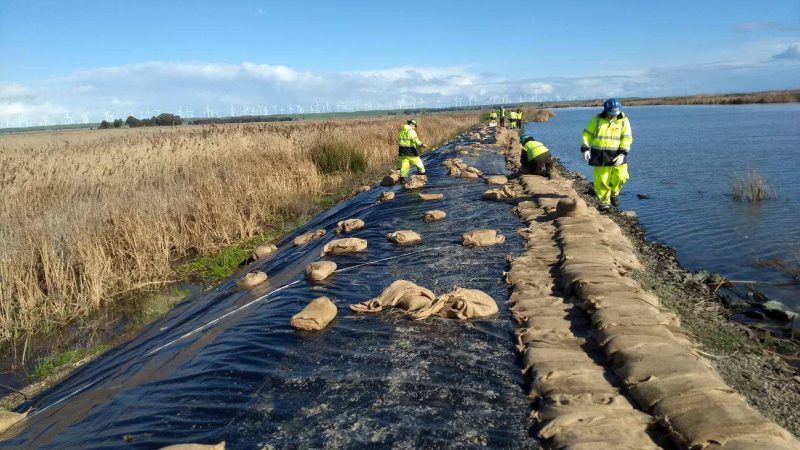Flood Response
Corpsmembers protected property and homes during nearly every major flood since 1976.
CCC crews work closely with the Department of Water Resources to repair and stabilize levees and protect them from wave-wash erosion. Often the CCC flood response targets islands in the Sacramento-San Joaquin Delta. Crews also work throughout the state to aid communities facing threats from major storms or floods.
In 2017, California experienced significant rainfall and flooding statewide. Corpsmembers responded to the Oroville Dam crisis in Northern California by providing camp support and project support to dam engineers. Crews created safe passages for engineers to go down to erosion sites by clearing trees and brush and building staircases. Corpsmembers also sand bagged areas of the dam itself to divert water so that engineers could better evaluate the damage.
All Corpsmembers receive Flood Fight training that includes techniques for properly filling and placing sandbags, protecting hillsides, and ensuring that crews are ready to respond when flooding occurs or severe winter storms are on the horizon. Since the CCC was established, crews have filled more than three million sandbags.
Flood prevention and flood fighting work can include:
- Debris removal
- Levee reinforcement
- Boil containment
- Filling and stockpiling sandbags
- Sandbagging to protect buildings and structures
- Hillside stabilization
- Limited levee patrol
- Evacuation assistance
- Wave-wash protection
CCC crews also work summer and fall to clear flood channels and storm drains ahead of winter storms.
Local governments can request crews by entering into an agreement directly with the CCC.


